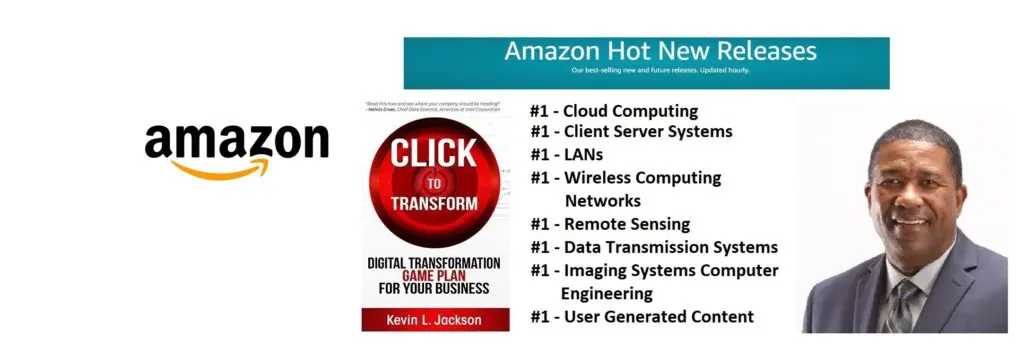Twitter Feed
One AWESOME Week of Cloud Computing
We just finished up five AWESOME days of cloud computing training with USAREUR in Schwetzingen, Germany ! CHECK IT OUT !! Create your own video slideshow at animoto.com. Sure we…
NGA Exploring “Community Cloud” With NCOIC
The National Geospatial-Intelligence Agency (NGA) is looking to leverage industry expertise through collaboration with the Network Centic Operations Industry Consortium (NCOIC). NGA provides timely, relevant and accurate geospatial intelligence in…
DoD, NASA and GSA Address Secure Cloud Computing
On Thursday, May 26th, the Federal Executive Forum featured three important Federal cloud computing leaders: David McClure- Associate Administrator, GSA Office of Citizen Services and Communications Col. Kevin Foster- Office of…
Cloud Computing Day at DoDIIS
I’m declaring Monday, May 24th, as Cloud Computing Day at DoDIIS. Lieutenant General Richard Zahner, Army Deputy Chief of Staff, G2, seemed to get things going with his video that…
Vivek Kundra – State of Public Sector Cloud Computing
Last week Federal Chief Information Officer Vivek Kundra release his report on the “State of Public Sector Cloud Computing”. The report not only details Federal budget guidance issued to agencies…
Cloud Computing at DoDIIS
Next week in Phoenix, AZ, the Defense Intelligence Agency will host the 2010 Department of Defense Intelligence Information Systems (DoDIIS) Worldwide Conference. The theme of this event is “Mission Powered…
Open Group Publishes Guidelines on Cloud Computing ROI
In an important industry contribution, The Open Group has published a white paper on how to build and measure cloud computing return on investment (ROI). Produced by the Cloud Business…
The Army’s iPhone Story
Sandra Erwin of National Defense magazine just published an excellent article on the Army’s foray into developing soldier-friendly smartphone applications. Giving credit to Army CIO Lt. Gen, Jeffrey Sorenson and…
Vivek Kundra Steps Up to Cloud Computing’s Next Challenge
” [C]loud customers must be able to easily store, access, and process data across multiple clouds; weave together a mesh of different services to meet their needs; and have a…
Cloud Computing’s Next Challenge
Earlier this month, Melvin Greer and I teamed up on a Military Information Technology piece. Melvin is a senior research engineer and cloud computing chief architect at Lockheed Martin, and…
The Achilles heel of every transformative business model is their reliance on ever increasing amounts of data that need to be transported quickly across wide area networks and processed at edge computing end points. To meet this expected demand, the global telecommunications industry is rapidly moving toward a future in which networks must have the agility, flexibility, and scalability to deliver aggregated capabilities through fully programmable networks.
Since the late 1970s, new generations of technology and wireless standards have been introduced every decade through the current transition between 4G and 5G capabilities. Limited data capability was provided using circuit-switching under the European Telecommunications Standards Institute (ETSI) Global System for Mobile Communications (GSM) standard. Improved data rates were brought to the market in the late 1990s by using 2.5G and 2.75G technology, which were named GPRS (general packet radio service) and EDGE (enhanced data rates for GSM Evolution). The introduction of the LTE network later set the standard for high-speed wireless communications on mobile devices and data terminals.
Historically, sovereign nations have managed their telecommunications networks as national assets.
The political negotiations that drove that history led to underlying technological choices and today’s
heated international competition around 5G network deployments. In fact, western nations fear that China’s Huawei Technologies’ dominance of 5G technology could give the Chinese government backdoor access to Western mobile networks and the application. This international competition will determine the availability of specific technologies and telecommunications resources in each geographic region.
For 5G networks, data transfer speed, volume, and latency depend on the spectrum bands used and the network usage context (fixed or mobile). MmWave spectrum is a high-frequency technology that lies between 30 GHz and 300 GHz. It is attractive because its shorter wavelengths create narrower beams, which provides better resolution and security for data transmission. A 5G mmWave system requires a significant infrastructure build but could reap the benefits of data transferred at up to twenty times the speed of current 4G LTE networks. MIMO (multiple-input and multiple-output) increases throughput by using high-quality signals to receive multiple data streams at a reduced power per stream. Massive MIMO can multiply the capacity of a wireless connection without requiring more spectrum, which could potentially deliver a fifty-fold increase in the future.
These network capabilities are substantially superior to previous wireless technology generations and have subsequently set off the rapid development of many new application requirements and functions. With this new infrastructure, application components are placed in an optimal location to use compute and data storage services of the distributed cloud. The distributed cloud approach increases capacity, availability, and coverage while also limiting data transfer requirements. A distributed cloud solution enables edge computing by using micro and small data centers. Application developers must learn how to exploit these new design requirements to deliver ever increasing value to their end users.
Learn more about digital transformation innovation: pick up a copy of my new book, Click to Transform!Â

Cloud Computing
- CPUcoin Expands CPU/GPU Power Sharing with Cudo Ventures Enterprise Network Partnership
- CPUcoin Expands CPU/GPU Power Sharing with Cudo Ventures Enterprise Network Partnership
- Route1 Announces Q2 2019 Financial Results
- CPUcoin Expands CPU/GPU Power Sharing with Cudo Ventures Enterprise Network Partnership
- ChannelAdvisor to Present at the D.A. Davidson 18th Annual Technology Conference
Cybersecurity
- Route1 Announces Q2 2019 Financial Results
- FIRST US BANCSHARES, INC. DECLARES CASH DIVIDEND
- Business Continuity Management Planning Solution Market is Expected to Grow ~ US$ 1.6 Bn by the end of 2029 - PMR
- Atos delivers Quantum-Learning-as-a-Service to Xofia to enable artificial intelligence solutions
- New Ares IoT Botnet discovered on Android OS based Set-Top Boxes
